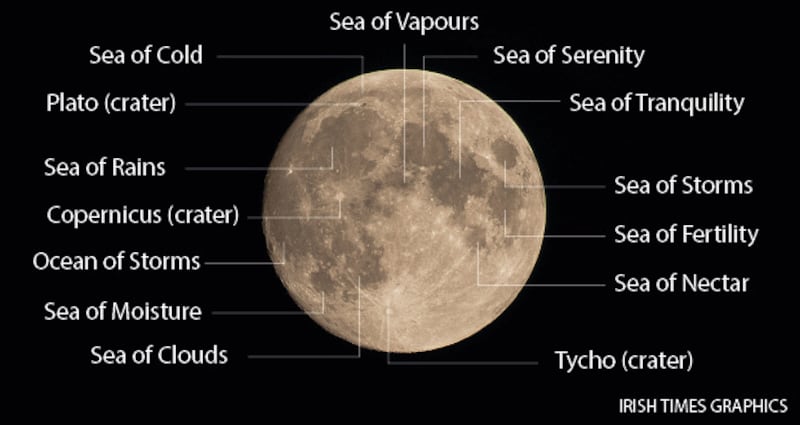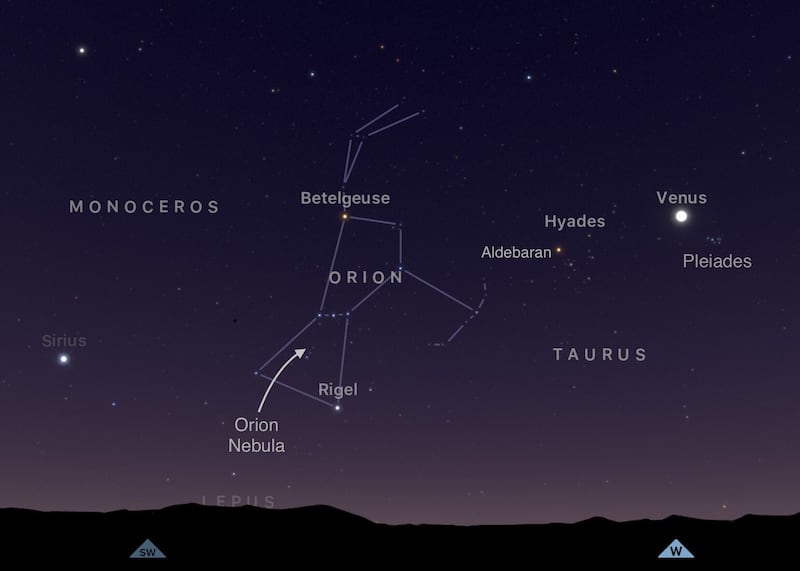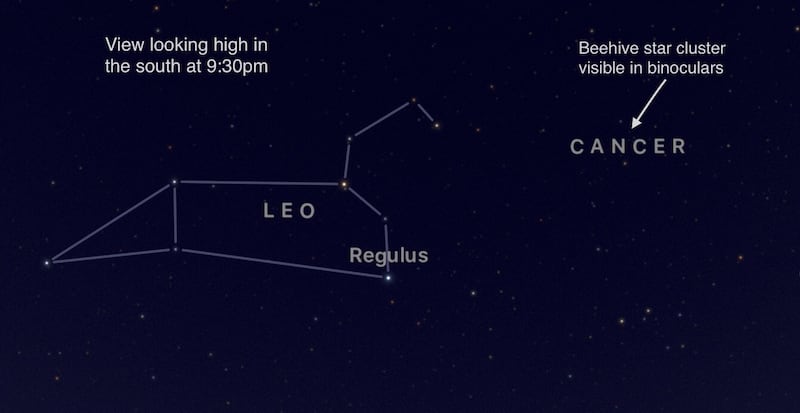The coronavirus lockdown has confined many of us to our homes and, if we are lucky, to our back gardens.
While human nighttime activity has been severely curtailed, the sky above continues in its imperturbable way.
Spring is a great time to be out of doors and looking up at the heavens. There are two caveats. The first is the weather in Ireland which is an occupational hazard for any amateur or professional astronomer. By some estimates just one night a week is completely cloud-free though you should see lots in partially clouded skies
Do make the best of any clear weather that comes along. Ideally, you need to stay out for at least 20 minutes to allow your eyes to adapt to the darkness. You will see a lot more than if you take a quick peek outside or out the window.
The other scourge of astronomers is light pollution. In built-up areas light can obscure some of the glories of the heaven most notably the Milky Way. The more rural the location, the more you will see, while sticking to the current coronavirus restrictions of course.
Nevertheless, most of the sky’s most prominent objections can be seen even in light polluted skies.
Skygazing for beginners is much easier than it used to be. There are a multiplicity of apps that will show you around the sky - we have been using Sky Guide, available on Apple and Android. All you have to do is point your smartphone upwards. Nevertheless, it is good to know what you are looking at.
Fortunately, there is much of interest to be seen with the naked eye and with binoculars. These objects can be seen using either. You will need a small telescope to see details on the planets Jupiter, Saturn and Mars which are in the morning sky during the month of April.
Moon: The supermoon is quite the sight in the skies this week. The moon's surface is made up of mountains, craters and "seas" which flat, grey shaped areas which were made when molten lava cooled when the moon was created.

The most discernible feature with the naked eye is the figure of eight feature slightly right of centre of the moon. The top part of the eight is the Sea of Serenity and the bottom half is the Sea of Tranquillity. The Sea of Tranquillity is where first moon landing landed on the moon in 1969.
Near the bottom of the full moon is the huge crater Tycho which is just about discernible with the naked eye, but is very much visible even in a small pair of binoculars. This is a spray crater which resulted after a huge asteroid struck the moon during its formation. Another crater which is visible slightly above Tycho is Copernicus.
VENUS: Venus will be the star of the heavens so to speak for the next month. It is unmistakable as it blazes away in the southern sky from 8.30pm. It looks like a star, but is a planet. If you look through binoculars its light is constant while stars twinkle. A small telescope will reveal that Venus has phases like the moon and can sometimes appear as a crescent.
THE PLOUGH: Known also as the Big Dipper, the Plough is the asterism (star pattern) in the sky that everybody knows. It is not a constellation in itself as it forms part of Ursa Major, the Big Bear.

The Plough is most distinguished by the mid-star in the handle which is actually a double star (two stars that orbit each other). It used to be a test of visual acuity if you could see two stars not one. They are Alcor and Mizar also known as the horse and rider and they are easily resolvable in a pair of binoculars.
POLARIS: The two stars on the pan end of the Plough point directly to Polaris, the North Star. This is the most important star in the sky. It points due north and navigators used it for millennia to determine their longitude. For instance observed from Dublin it is at an angle of 53 degrees to the horizon but at the North Pole it will be directly overhead. It is always in the same place in the sky and the Vikings believed it was a spike around which the universe revolved. In 2008 Nasa sent a radio signal of The Beatles' Across the Universe in the direction of Polaris. Do not be holding your breath wishing for a response. The message will take 431 years to reach the star and, assuming there is any intelligent life on some of the planets around Polaris, another 431 years for the message to return to Earth.
Orion: Orion, the hunter, is the jewel of the night in the southern sky. Unlike a lot of other constellations, it actually looks like what it is named after. Orion is distinguished by its belt of three diagonal stars. Underneath is a fuzzy patch of sky called the Orion nebula which can be seen clearly in a pair of binoculars. This is a star formation area.

In the top left hand corner of Orion is the super red star Betelgeuse. This is one of the largest stars visible to the naked eye. It may not even exist any longer. In February Nasa scientists observed that it had dimmed considerably. This is an indication that it is about to reach the end of its life and blow up into a supernova. That might have already happened. As it takes 700 years for the light from Betelgeuse to reach Earth, we might not know about it yet. Then again it might not blow up for another 100,000 years. Nobody knows for certain when it will erupt into a supernova.
Rigel: At the opposite end to Betelgeuse is the blue supergiant Rigel which is 70 times as big as our sun. Stars vary in colour according to their age and Rigel is another star near the end of its life.
Sirius: To the bottom left of Orion is Sirius, the Dog Star, which is the brightest star in the sky. It's so bright because it is very close in astronomical terms being just 8.6 light years away from Earth. This is all relative given the distances involve. Sirius is 80 trillion kilometres away that's 80,000,000,000,000 kilometres from Earth. We will not be going there any time soon.
The Pleiades: The Pleiades, to the top right hand side of Orion, looks like a fuzzy patch in the sky to the naked eye, but reveal its full glory in a pair of binoculars. With a pair, you can discern a cluster six stars shining through the cosmic gas and dust. This is a star formation nursery where new stars are formed from the cosmic gases surrounding the six stars.
Leo: The constellation of Leo (not to be confused with the astrological sign) dominates the spring sky. This is another constellation which looks like what it is supposed to resemble which is a crouching lion.

For more information see http://astronomy.ie/ and Irish Astronomical Society










